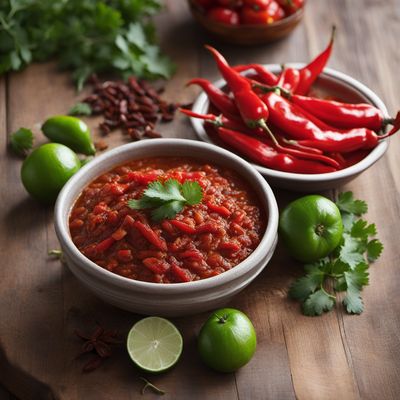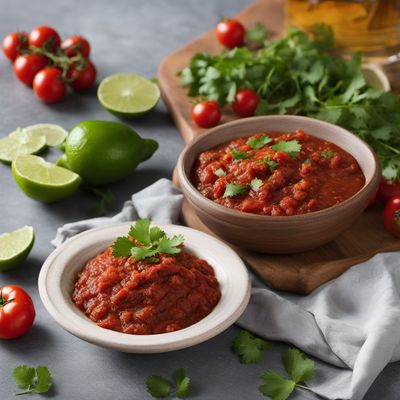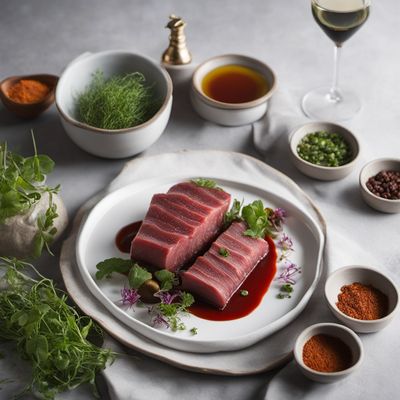
Recipe
Molecular Gastronomy Enchiladas
Enchiladas Reimagined: A Molecular Gastronomy Twist
4.7 out of 5
In the realm of molecular gastronomy, we take the traditional Mexican dish of enchiladas and transform it into a visually stunning and innovative culinary experience. By utilizing scientific techniques and modern ingredients, we elevate the flavors and textures of this beloved dish, while still paying homage to its Mexican roots.
Metadata
Preparation time
60 minutes
Cooking time
10 minutes
Total time
70 minutes
Yields
4 servings
Preparation difficulty
Medium
Suitable for
Vegetarian, Gluten-free, Dairy-free, Low-carb, Keto-friendly
Allergens
Wheat (in tortilla dough), Soy (in soy lecithin)
Not suitable for
Vegan, Nut-free, Paleo, Whole30, High-Fiber
Ingredients
In this molecular gastronomy adaptation, we deconstruct the traditional enchiladas and reimagine them as individual components. The tortillas are transformed into delicate spheres, the filling is encapsulated in a gel, and the sauce is transformed into a foam. This unique presentation allows for a burst of flavors and textures in every bite, creating a truly memorable dining experience. We alse have the original recipe for Enchiladas, so you can check it out.
-
200g (7 oz) sodium alginate 200g (7 oz) sodium alginate
-
500ml (2 cups) water 500ml (2 cups) water
-
200g (7 oz) calcium lactate 200g (7 oz) calcium lactate
-
200g (7 oz) tortilla dough 200g (7 oz) tortilla dough
-
200g (7 oz) chicken or beef filling 200g (7 oz) chicken or beef filling
-
100g (3.5 oz) enchilada sauce 100g (3.5 oz) enchilada sauce
-
10g (0.35 oz) soy lecithin 10g (0.35 oz) soy lecithin
Nutrition
- Calories (kcal / KJ): 350 kcal / 1465 KJ
- Fat (total, saturated): 12g, 3g
- Carbohydrates (total, sugars): 25g, 2g
- Protein: 30g
- Fiber: 4g
- Salt: 2g
Preparation
-
1.In a bowl, combine sodium alginate and water. Stir until fully dissolved. Let it rest for 30 minutes.
-
2.In a separate bowl, dissolve calcium lactate in water. Let it rest for 30 minutes.
-
3.Roll out the tortilla dough into thin sheets. Cut into small circles using a round cutter.
-
4.Fill each tortilla circle with the chicken or beef filling and fold into a sphere shape.
-
5.Carefully drop the filled tortilla spheres into the sodium alginate solution and let them sit for 5 minutes.
-
6.Remove the spheres from the sodium alginate solution and transfer them to the calcium lactate solution. Let them sit for another 5 minutes.
-
7.Remove the spheres from the calcium lactate solution and rinse them with water.
-
8.In a blender, combine the enchilada sauce and soy lecithin. Blend until a foam is formed.
-
9.Plate the tortilla spheres and top them with the enchilada foam.
Treat your ingredients with care...
- Tortilla dough — Ensure the dough is rolled out thinly to create delicate spheres.
- Sodium alginate — Dissolve completely in water to avoid clumps in the solution.
- Calcium lactate — Allow enough resting time for the solution to fully dissolve.
- Enchilada sauce — Use a high-quality sauce for the best flavor.
- Soy lecithin — Blend thoroughly to achieve a stable foam.
Tips & Tricks
- To add a burst of freshness, garnish the enchilada spheres with microgreens or edible flowers.
- Experiment with different fillings such as shrimp, mushrooms, or roasted vegetables for a variety of flavors.
- For an extra touch of molecular gastronomy, serve the enchilada spheres on a bed of dry ice to create a captivating smoke effect.
- If you don't have access to sodium alginate and calcium lactate, you can try using agar-agar and calcium chloride as alternative gelling agents.
- Serve the enchilada foam immediately after blending to maintain its airy texture.
Serving advice
Serve the enchilada spheres on individual plates, allowing each guest to experience the unique molecular gastronomy presentation. Encourage them to savor the burst of flavors and textures in each bite.
Presentation advice
Arrange the enchilada spheres in a visually appealing pattern on the plate. Drizzle some of the enchilada foam around the spheres for an artistic touch. Garnish with microgreens or edible flowers to add a pop of color.
More recipes...
For Enchiladas » Browse all
For Mexican cuisine » Browse all
More Mexican cuisine dishes » Browse all

Pollo Rancho Luna
Pollo Rancho Luna is a Mexican dish that is made with chicken, tomatoes, onions, and spices. The dish is typically served with rice and beans, and...

Enmoladas
Chicken Enchiladas in Mole Sauce
Enmoladas are a traditional Mexican dish that features tender chicken wrapped in a warm tortilla and smothered in a rich and flavorful mole sauce....

Tortilla Santiagueña
Tortilla Santiagueña is a traditional Mexican flatbread that is usually made with corn flour. It is a popular bread in the state of Oaxaca and is...











